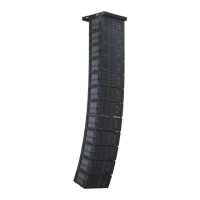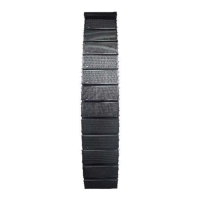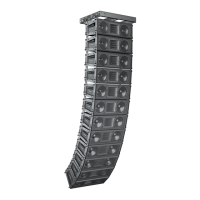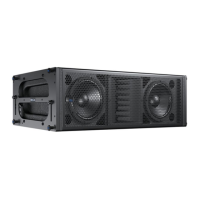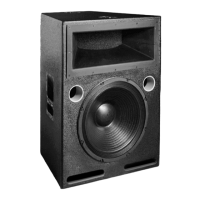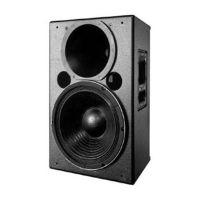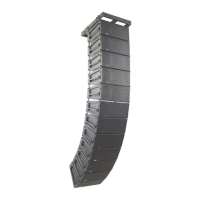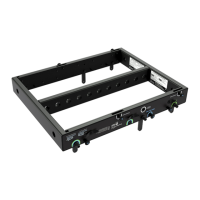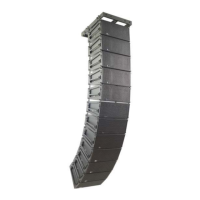16
CHAPTER 5
250 Hz
12 MICA
Cabinets
24 MICA
Cabinets
6 MICA
Cabinets
24 MICA
Cabinets
12 MICA
Cabinets
6 MICA
Cabinets
125 Hz
Figure 5.1. MAPP Online predictions of 6-, 12-, and 24-cabinet MICA line
arrays at 125 Hz (top) and 250 Hz
Adjusting Line Array Coverage
Regardless of the needs of your system design, fine-tuning
coverage for a MICA array is dependent on three factors:
■ Number of Array Elements. Determining the number
of elements to use is critical: The number of elements
drastically affects the SPL available from the system
as well as the uniformity of coverage in both SPL
and frequency response. The number of elements
profoundly effects the directivity at lower frequencies.
■ Vertical Splay Angles. Changing the splay angles
between cabinets has a significant impact on vertical
coverage for the high frequencies, with the result that
narrower vertical splay angles produce a higher Q
vertical beamwidth, while wider splay lowers the Q at
high frequencies. In general, the splay angles do not
affect the vertical coverage at lower frequencies.
■ Horizontal Coverage. Horizontal coverage for a single
MICA array can be considered constant regardless of the
number of array elements or the angles between them.
TIP: The angle between two or more line
arrays in the horizontal plane can also be
changed to meet additional design requirements (for
example, wall reflections).
Given these factors, designing and deploying a line array
system will typically have the following objectives:
■ Even horizontal and vertical coverage
■ Uniform SPL
■ Uniform frequency response
■ Sufficient SPL for the application
With two different technologies (low-frequency cone
radiators and high-frequency wave guide) built into each
MICA cabinet, achieving these goals becomes a multi-step
process, with different strategies for the lower and higher
frequencies for long throws and short throws.
NOTE: MAPP Online, covered later in this
manual, is the tool of choice to enable you to
make accurate and comprehensive predictions for
optimal coverage(s) during the design phase.
High-Frequency Design Strategies
Planning for high-frequency coverage is a matter of
deciding the number of elements and fine-tuning the splay
angles between cabinets. The number of elements does
not necessarily have a significant impact on SPL at high
frequencies (it will at low frequencies), but can profoundly
affect vertical coverage and throw capabilities of the array.
For the far field, a smaller mechanical splay angle between
cabinets achieves superior throw through better coupling
to compensate for energy lost over distance. The longer
the throw needed, the more elements needed with smaller
angles at the top of the array.
In the near- to mid-field, larger splay angles are used to
increase vertical coverage.
NOTE: Optimal acoustical performance for
MICA is achieved by using angles between 0
and 6 degrees in a MICA array; use extended angles
(7 to 13 degrees) with caution and only if necessary.
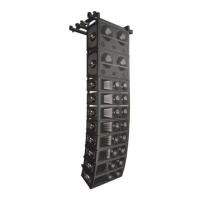
